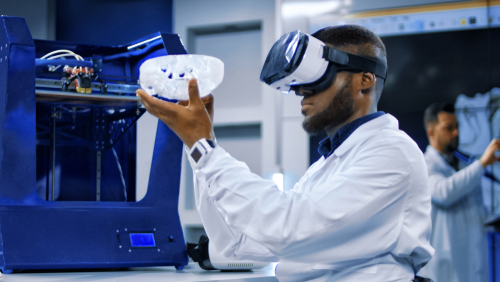The technology of virtual reality in today’s society tends to be related to the gaming industry, where it’s made incredible breakthrough’s and is slowly becoming the innovative experience that’s dominating the sector. Although it’s enhanced the experience for gamer’s, it’s also made significant improvements to the health industry too, advancing visual treatments, chronic pains and other health conditions. Below are examples of how VR technology is changing the healthcare industry for the better.
Reducing Chronic Pain
Chronic pain is a common problem for many, and we end up relying on painkillers to help resolve the problem that we have. However, the healthcare industry continues to look to safer opioid alternatives that are non-addictive. There’s the potential for virtual reality to be the solution for the pain that many can suffer from. Using medical VR, there has been evidence to suggest that it can help to stop the brain from processing pain in patients. The idea is that the technology can help to keep the patient’s mind off the pain and allow them to focus more on VR worlds as a chance of escapism. This can help to reduce the amount of patients in wards and save on medical costs as a result.
Enhancing Care To The Elderly
The healthcare industry continues to invest in young doctors that have bright futures, but this can cause a bit of a divide between them and elderly patients in care. Aging problems that the patients have can sometimes make it hard for young doctors to understand. But through VR technology, doctors can feel what it’s like to be an elderly patient first hand, showing them what it’s like from the patient’s perspective. This could help the connection between young doctors and elderly patients which can enhance the care that seniors receive while they’re hospitalized.
Improving Autism Therapy
Autism Spectrum Disorder affects more than 1% of the world’s population and at the moment there is no complete cure for the disease. However, there are improvements that can be made to a patient’s communication and social interaction through speech and language therapy which, at the moment, can only take place in person through sessions yet virtual reality can help to reduce this. The startup Floreo uses the technology to provide support for improving social interaction at home. It can create an environment which includes virtual characters that the patient can engage and interact with. The sensory complexity of the virtual environment can also be adjusted to cater to the children’s condition.
Education
Due to the intensity of medical wardens nowadays, it can be extremely difficult for students to get a hands-on experience with surgeries. Through virtual reality, surgeons are able to provide learning experiences for students or for other educational purposes by streaming the operations globally using a virtual reality camera. So for example, a hair transplant Manchester based could be performed whilst students in London have the operation streamed to them. Alternatively, the development of VR goggles for healthcare would allow students to step into the operation and see the procedure up close without interrupting the surgeons who are performing the treatment.
Final Thoughts
Whether it’s treating patients with autism or helping them to calm down before their surgery, the introduction of virtual reality has been revolutionary in improving solutions where traditional methods have fallen. It’s also a safer way to treat patients for health-related issues and its success is likely to make VR a primary focus in the years to come.






